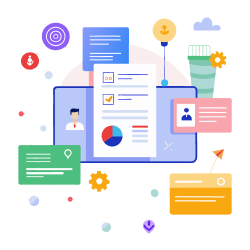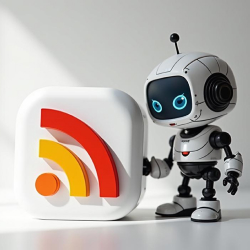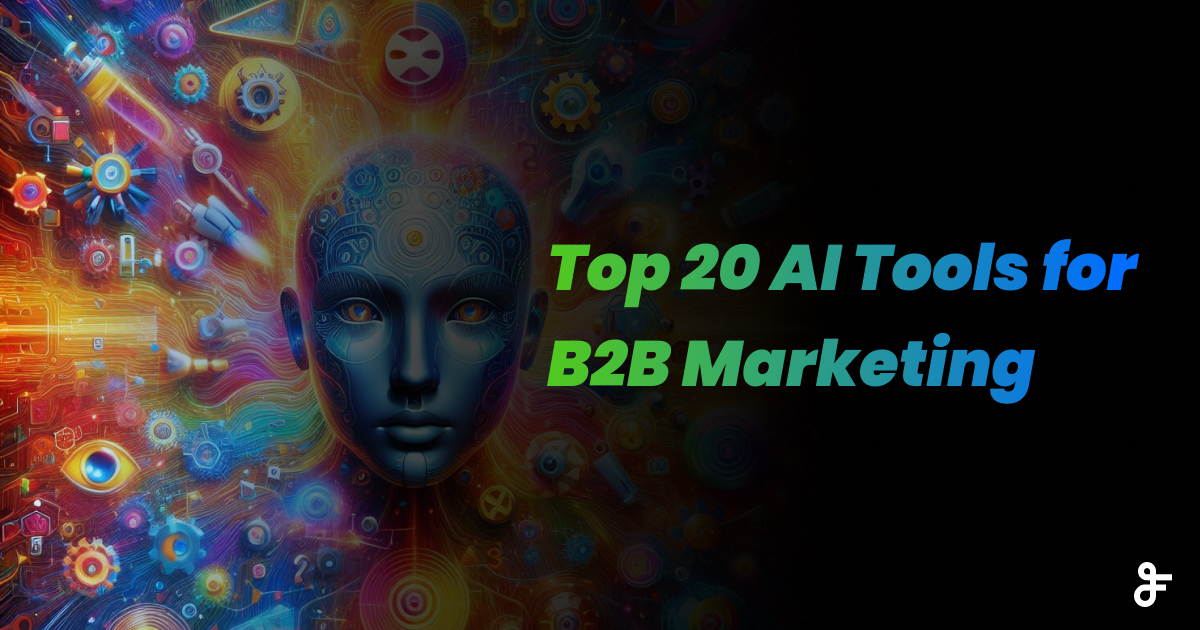Integrating RSS Feeds into Your AI Content Strategy for Maximum Engagement
Contents
- 1 Evolution of RSS feeds in AI Content Strategies
- 2 Benefits of Adding RSS Feeds with AI Tools to Your Content Strategy
- 3 Some practical use cases for integrating RSS and AI include the following
- 4 Step-by-step instructions for integrating RSS feeds with AI tools
- 5 Some of the Challenges and How to Overcome them:
- 6 Future Trends: Next Generation of RSS and AI Integration
- 7 Conclusion
- 8 Further Readings
AI content strategy is dramatically changing how companies create and collaborate on content. By using artificial intelligence (‘AI’) tools, enterprises are capable of providing customers with more engaging moreover personalized experiences that are completely attuned to them as individuals. Moreover, without the need for personal investment on your part per se. As for the hidden benefits? RSS feeds are quietly returning to their former prominence. With AI combined with RSS feed readers you get a more intelligent content strategy that saves time and makes your audience feel much closer to you. This is a perfect combination that will enhance any marketing program. Let us see how it goes when we use AI Content Strategy!

Evolution of RSS feeds in AI Content Strategies
Historical Background of RSS Feeds About Content Marketing
RSS stands for “Really Simple Syndication.” It was invented in late 1990, specifically to make it much easier to follow updates on any website. It could not be simpler: a user would subscribe to RSS feeds from, say, three websites rather than having to check all those sites individually for updates. Back then, being a simple format, RSS feeds came to everyone with updates exactly as it was coming: no customization.
Present Relevance of RSS Feeds to AI-Powered Content Strategy
With the advent of AI, it can now make use of RSS feeds in delivering specific customized content based on individual interests. AI analyzes what your audience likes, and RSS feeds provide tailored updates that match their preferences. People get the kind of content they care about the most hence will have a higher probability of engaging with your brand longer.
Benefits of Adding RSS Feeds with AI Tools to Your Content Strategy

Personalized Content Recommendations in AI Content Strategy
AI can be trained to learn what your audience likes and how they behave, which you could then apply towards the RSS feeds. This might provide them with content recommendations and not just general posts that users are of no interest in. For example, social media marketers will read articles often; the AI can thus prioritize similar content in their feed. This keeps users interested as well as encourages them to engage more with your content.

Automated content summary
Long articles are certainly not a reader’s favorite thing, as it takes a lot of effort to read long stories. An important feature that AI tools offer their users is the automatic summarization of the content from RSS feeds. So, the user might obtain an idea about quicker content without wasting too much time. Thus, this will make your content more accessible and more user-friendly.

Content Curation and Filtering
The vast open space called cyberspace may contain a lot of information, but to your target audience, not all that information has much value. AI systems can curate and filter the same kind of information contained in those RSS feeds based on popular content, liked content before by users, or on topics on which you are focusing. Your target audience then receives only high-quality and relevant information.

SEO and Content Discovery
AI helps in SEO through suggesting trending keywords or topics that your audience is interested in. By incorporating those insights into your content, you can increase your presence on search engines and attract more visitors to visit and discover the content you have.
Some practical use cases for integrating RSS and AI include the following

Automatic Newsletters
You can even create newsletters personalized for your subscribers using AI-powered feeds of RSS. Here’s how it works: the AI algorithm inspects the interests of each subscriber and selects articles that are most relevant to him. Subsequently, every subscriber will receive a newsletter that is exactly tailored to his interests, thus increasing the chances that he will open such a newsletter and actively read it.

Content Curating on Social Media
Maintaining up-to-date with social media requires much attention; therefore, to a large extent, AI and RSS feed can help in automatically finding relevant content to share with your audience via your social media channels. This keeps your profiles updated and lively without necessarily having to refresh them constantly.

Market Intelligence in Real-Time
Industry and competitor activity should be current. AI-powered RSS feeds can follow news as well as any other updates in real-time compared to the information; this will make sure you get the latest. In doing that, you will be more equipped with the ability to make swift decisions that are considered enough to keep you in the forefront of your competitors.
Step-by-step instructions for integrating RSS feeds with AI tools
Choose the Right AI Tool
There should be in place an easily accessible AI tool. The readily available popular ones are as follows

Feedly with Leo
It is quite much a user-friendly interface, where the AI assistant, Leo further assists you to filter your chosen result and prioritize the content.
Note: If you’re willing to jump into the Feedly AI world, well, get ready to shell out some cash! This super powerful tech only comes out to those Feedly Pro or Team users. But that’s not to mention a paid plan very often coming across as an add-on expense. However, the thing is: you’re paying for a tool that’s going to make your gathering of content quicker and more efficient, and also allow you to tap into the power of AI. You get what you pay for-or, in this case, pay for what you get!

Zapier
Connects applications and automates tasks to instant configuration of custom RSS workflows.

Inoreader
Its advanced feature on content organization and filtering through AI.
Setting Up and Connecting Feeds
Connect your RSS feeds to an AI tool by following the simple steps outlined below.
- Sign up to an AI tool like Feedly.
- Add RSS Feeds: In your account, look for add content or sources. Introduce the URLs of the RSS feeds you wish to follow.
- Organize Your Feeds: Organize your feeds through categories or folders according to their relevance to a specific topic or interest.
- Enable AI filters: Use AI features to set preferences. For example, you can instruct the AI to prefer articles on a topic such as “digital marketing” or filter out those containing specific keywords.
- Train the AI: As you engage with the content-that is to say, by reading, saving, or skipping articles-the AI learns your preferences and improves its recommendations.
Automation Tips
- Schedule content to update: Schedule your AI tool for regular searches at specified times so that your feeds are constantly updated.
- Enable Summaries: Activate Summary to have a quick view of new articles.
- Link to Other Applications: Connect your AI-powered RSS feed to other applications, such as your email newsletter service or social media accounts, for automatic content sharing.
Some of the Challenges and How to Overcome them:
Data Overload
With this amount of content, it can be staggering. To control this:
- Update Your Preferences occasionally: Switch your AI filters to only hear what appears most relevant.
- Restrict sources: Accept only RSS feeds that come from good sources offering relevant content.
Accuracy of AI Recommendations
Clearly, this does not get everything right on the first try.
- To help this, interact with the AI by either liking or dismissing individual content. This has the AI learn what you like best.
- Review Settings Periodically: You should check your filters and preferences to ensure they are relevant to your new interests.
Privacy and Ethical Implications
And, as with anything involving AI, there is always the responsibility to maintain privacy.
- Be transparent: Explain to your users exactly how you are using AI to personalize their content.
- Governed by Laws and Regulations: Respect the laws regarding data protection, such as General Data Protection Regulation.
- Obtain Consent: Make Sure You Have Permission to Use the Data of Users in Personalization.
Future Trends: Next Generation of RSS and AI Integration
AI-based personalization
AI is always evolving. In the future, AI may consider even more factors, such as the day and hour of the visit or even events in real time, to provide content that is much better tailored and more suitable for each user.
Voice and Visual Integrations
Since you may receive content in a more personalized way than other voice commands, you can experience content in a more immersive experience with the help of voice assistants like Amazon Alexa and Google Assistant. Similarly, AI could enhance visual media by curating images and videos tailored to your interests.
Conclusion
Combine your RSS feeds with AI so that you can:
- Achieve content delivery to your audience.
- Save time due to automation
- Boost SEO Efforts
- Be able to get real-time updates
This will make sure you are better at engaging your audience and on top of things of what you have been doing on your AI Content Strategy.
Further Readings
How to use Feedly and Leo for content curation: Learn how to get started with Feedly’s AI assistant.
Automate Workflow with Zapier: A Beginner’s Guide to Using Zapier for Automation.
RSS and SEO – Are RSS feeds bad for SEO?
Top 20 AI Tools for B2B Marketing in 2024
Implementing RSS feeds and AI Content Strategy has guaranteed to put one on the right path in this age of digital technology. So, what are you waiting for? Go ahead and see what impact it makes about your audience engagements and business growth.
